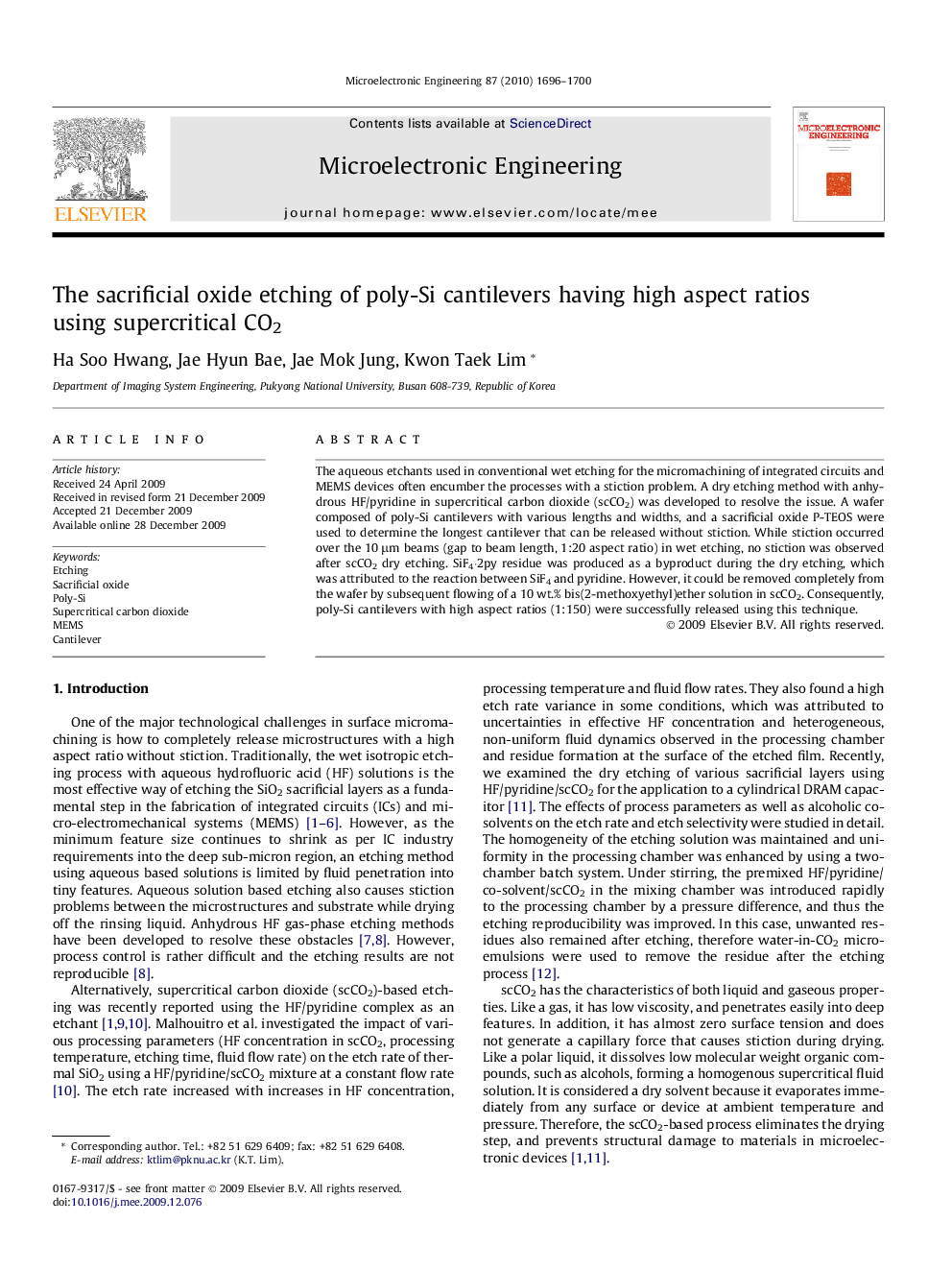| Article ID | Journal | Published Year | Pages | File Type |
|---|---|---|---|---|
| 544806 | Microelectronic Engineering | 2010 | 5 Pages |
The aqueous etchants used in conventional wet etching for the micromachining of integrated circuits and MEMS devices often encumber the processes with a stiction problem. A dry etching method with anhydrous HF/pyridine in supercritical carbon dioxide (scCO2) was developed to resolve the issue. A wafer composed of poly-Si cantilevers with various lengths and widths, and a sacrificial oxide P-TEOS were used to determine the longest cantilever that can be released without stiction. While stiction occurred over the 10 μm beams (gap to beam length, 1:20 aspect ratio) in wet etching, no stiction was observed after scCO2 dry etching. SiF4·2py residue was produced as a byproduct during the dry etching, which was attributed to the reaction between SiF4 and pyridine. However, it could be removed completely from the wafer by subsequent flowing of a 10 wt.% bis(2-methoxyethyl)ether solution in scCO2. Consequently, poly-Si cantilevers with high aspect ratios (1:150) were successfully released using this technique.
